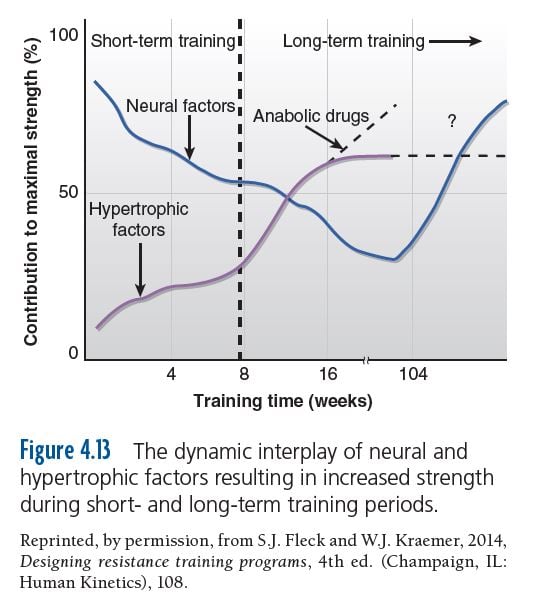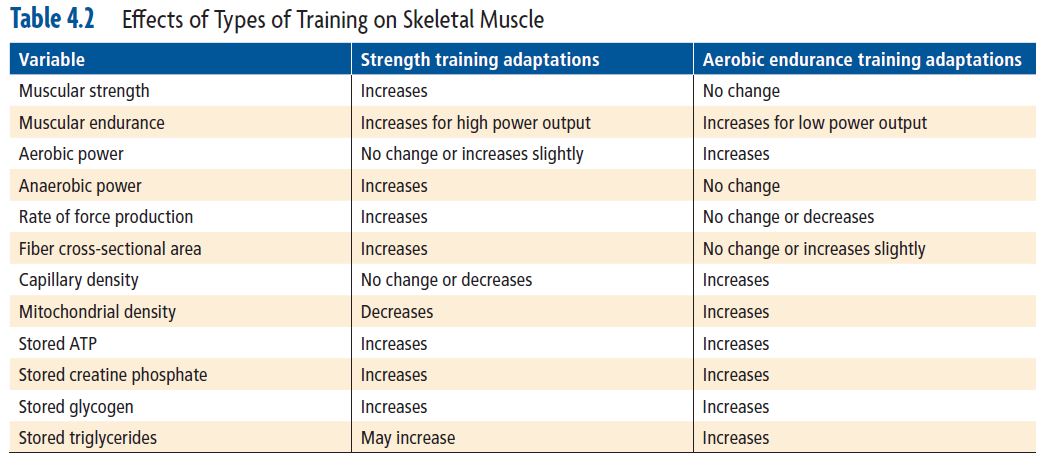Time Course of Physiological and Anatomical Changes
by NSCA's Essentials of Tactical Strength and Conditioning
Kinetic Select
April 2020
This excerpt from NSCA’s Essential of Tactical Strength and Conditioning explores the neural and muscular adaptations to training over time.
The following is an exclusive excerpt from the book NSCA's Essentials of Tactical Strength and Conditioning, published by Human Kinetics. All text and images provided by Human Kinetics.
The rate and degree to which the body adapts to strength and endurance training are highly variable and are most influenced by training intensity, volume, frequency, and initial fitness level. Sedentary people with no training experience have the greatest adaptation potential, meaning they possess the greatest capacity to increase their performance and will likely show the most rapid gains in strength or aerobic endurance once they begin an exercise program. Resistance training programs bring about both central and peripheral adaptations, with neural changes occurring more rapidly than muscular ones. In fact, the rapid increase in strength that occurs when one first undertakes a resistance training program is largely due to neural adaptations. The act of generating force during resistance training is a skill that improves as the CNS becomes better at muscle coordination and motor unit recruitment. Increases in muscle CSA also make a significant contribution to muscle force production, and such increases can be seen as quickly as three weeks after beginning a resistance training program (16). The relative contributions of both neural and muscular adaptations to resistance training are shown in figure 4.13.

Both neural and peripheral adaptations make an important contribution to muscle force production. However, the upper limit of one’s strength is ultimately determined by muscle CSA. Skeletal muscle also undergoes profound adaptations to aerobic endurance training. However, unlike adaptations to resistance training, adaptations to aerobic endurance training increase the ability of the muscle to utilize oxygen for ATP production and delay fatigue during repeated, low-intensity contractions. Increases in aerobic capacity largely depend on training intensity, with greater intensities bringing on more rapid improvement. Hickson, Bomze, and Hollozy demonstrated that VO2max can increase an average of 5% in 1 week after performing 40 minutes of daily high-intensity aerobic exercise, with an overall increase of 44% following 10 weeks of training (10).
The effects of both strength and aerobic endurance training on muscle fibers are summarized in table 4.2, and table 4.3 shows adaptations that occur following aerobic endurance training.


NSCA's Essentials of Tactical Strength and Conditioning is the ideal preparatory guide for those seeking Tactical Strength and Conditioning Facilitator® (TSAC-F®) certification, and a reference for fitness trainers who work with tactical populations such as military, law enforcement, and fire and rescue personnel. The book is available in bookstores everywhere, as well as online at the NSCA Store.
- Privacy Policy
- Your Privacy Choices
- Terms of Use
- Retraction and Correction Policy
- © 2025 National Strength and Conditioning Association